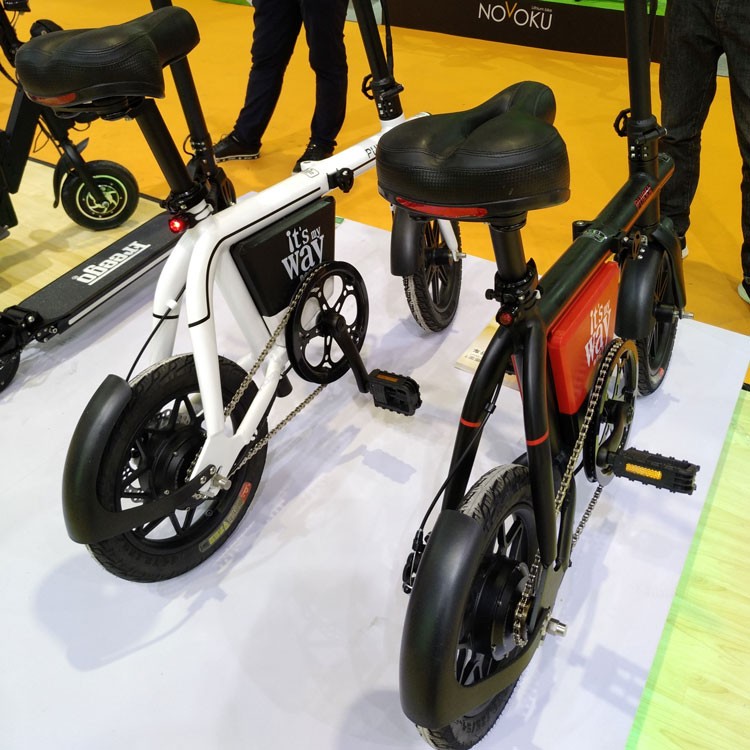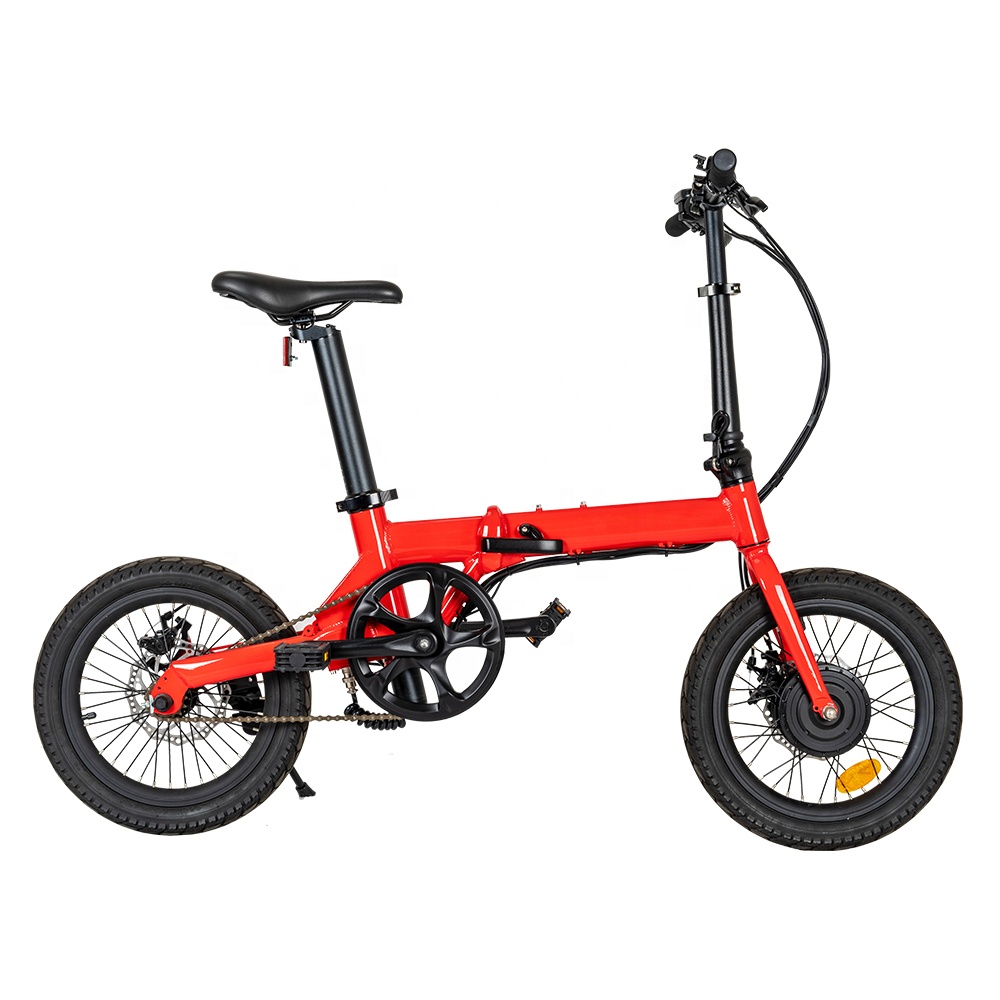News Categories
The epidemic lasted until May. With the increase of infection cases and the emergence of more and more asymptomatic infection cases, all over the world are facing the same thorny problem: how to achieve safe and reliable transportation and population circulation in the period of the covid-19 pandemic, so as to avoid further infection of new coronavirus?
In fact, in international financial centers such as New York, London, and Paris, millions of people commute and shop every day, which means that the public transport system can transport up to 1.5 billion passengers.
Of course, if it can be avoided, no one is willing to risk the risk of infection into the crowded subway, but at the same time, if everyone chooses to take or drive a private car, a large number of cars will lead to traffic paralysis, thus making emergency vehicles such as ambulances and fire engines unable to walk on crowded roads.
At the same time, automobile exhaust will aggravate air pollution, which makes the carbon emissions of many cities fall back to the original starting point. Faced with the dilemma of public transport and private cars, bicycles and electric bicycles, as a black horse, have become the ideal means of travel in the eyes of more and more urban planners and the first choice for residents to travel.
There is no doubt that 14 inch foldable e-bike are fast, comfortable, convenient, zero pollution, and can let us keep a certain safe distance when we travel. In hot summer, 14 inch foldable e-bike can also ensure our comfort in long-distance travel. In some cities in the United States, roads and parking can account for 50% to 60% of all real estate. Cars not only occupy a series of public areas such as parks but also leave narrow space for people who don't drive cars, making it almost impossible for people to keep a safe distance on crowded sidewalks. Therefore, it is time to reconsider the mode of travel when public transport and private cars are not the best choices during the new crown pandemic.
Sales of bike and 14 inch foldable e-bike are booming
When the new coronavirus first became popular, the global supply chain of traditional bicycles and 14 inch foldable e-bike was interrupted and sales were suppressed, and many stores were forced to close down due to local closed policies. However, the sales of e-bikes are growing rapidly all over the world, and many of them choose e-bikes for the first time. In Germany, for example, sales of e-bikes fell 20% to 30% in the first few weeks of April, according to data. But now, the bicycle shop that was closed has reopened again. Bicycle sales have suddenly soared. At the same time, the sales of 14 inch foldable e-bike have further increased, surpassing ordinary bicycles.
And people's demand for bicycles and 14 inch foldable e-bike has changed from leisure to daily use. Ryan Citron, a senior research analyst at guide house, says the same is true in the United States. During the initial period, citron said, "many of the retail stores were severely hit by the closure." However, sales have been growing rapidly since the bicycle store reopened.

The popularity of 14 inch foldable e-bike is supported by all parties
The influx of new bicycles will require infrastructure to keep these riders safe. Of course, this can't be done overnight, and even in cities like Amsterdam, where bicycles are the main means of transportation - people cycle half of their commutes - there is always a turning point in starting to change infrastructure.
Now, the UK is trying to start this transformation. The government has promised to invest hundreds of millions of pounds to improve roads and other facilities to make them more conducive to bicycle travel. Meanwhile, it has stepped up efforts to urge the public not to use public transport to avoid the spread of the new coronavirus. And the UK has withdrawn its bicycle and walking package from an emergency fund of 250 million euros (about $300 million) to create new bike lanes and safer intersections in a few weeks. Towns and cities have been told to redistribute road space to accommodate a significant increase in cyclists and pedestrians. 14 inch foldable e-bike is currently illegal in the UK, but tests next year to next month may change that.
Grant sharps, Transport Secretary, believes that such an alternative green way of travel will not only bring short-term benefits but also have a longer-term impact: "in this crisis, millions of people have found that cycling is an ideal way of travel - whether it is because it can exercise or because it can provide safe travel conditions.
Although we still try to avoid going out at the moment, we also need these people to continue to choose bicycles and let more people join in when everything is back on track. " "We know that cars will continue to be crucial to many people, but looking forward, we must build a better country with greener travel habits, cleaner air, and healthier communities.
Now, we are working with the City Council to build new bike lanes and space for people to walk through our city. " Last week, Sadik Khan, mayor of London, and transport for London (TFL) launched the street space project. The plan is mainly aimed at responding to changes in the mode of transportation brought about by the epidemic. According to statistics, with the lifting of the blockade, bicycle travel will increase 10 times, and walking travel will increase 5 times.
Similarly, other European cities have launched similar initiatives. Milan, one of the most polluted cities in Europe, plans to convert 22 miles (35 kilometers) of streets into bike lanes and pedestrian trails this summer as covid-19 restrictions are lifted. The plan also includes the construction of temporary bicycle lanes, new sidewalks, streets where bicycles and pedestrians take precedence over cars, as well as widening previous lanes and lowering speed limits. "We have been working for years to reduce the use of personal cars. According to the guardian, Milan's vice mayor Marco Granalli said in a commentary: "if everyone drives, there will be no space for no activities and no space for commercial activities outside the shops."
France is also setting up temporary bike lanes in cities across the country. Paris plans to open 400 miles of temporary bicycle lanes and transform its largest urban crossing into a bicycle-only road. Mayor Anne Hidalgo, who advocated cycling long before the outbreak, said it was impossible to get Paris back to the era of car dominance.
"I can say for sure that we will never allow ourselves to be harmed by cars and exhaust pollution. It will worsen the health crisis. Pollution itself is a health crisis and a danger, and the pollution combined with coronavirus is like a poisonous cocktail. So it's impossible to get downtown by any car in the solution, which actually only worsens the situation. "
About 25 miles (40 kilometers) of bicycle lanes are being built in Brussels. "We know that two-thirds of the journey in Brussels is less than three miles. "We want to encourage people who are in good health to walk or ride bicycles more," Belgian transport minister elk van den Brandt told Belgium's evening news. To that end, we have a responsibility to ensure the security of our infrastructure. "
Similarly, in the United States, some major cities have developed travel plans, such as banning car traffic and trying to provide more safe access for people who travel on foot or by bike. Some cities go even further, incorporating these plans into their future development plans so that they are no longer just temporary road changes.
Seattle recently announced that it would permanently close 20 miles of streets and ban most vehicles. "The (pedestrian street) is an important tool for families in our community to go out, exercise, and enjoy the good weather," Seattle Mayor Jenny Durkan said in a statement. In the long run, these streets will be a valuable asset to our community. " In April, Auckland said it would begin to gradually increase pedestrian streets, with the goal of shortening the carriageway by 74 miles, or about 10% of the city's total streets; Denver designated 13 miles of bicycle lanes; and Minneapolis set aside 18 for pedestrians and cyclists Boston is also considering using street space for bike lanes, wider sidewalks, and faster bus routes.
As of this week, New York has added 12 miles of pedestrian traffic and 9 miles of bicycle lanes. In addition, nine miles of the driveway have been closed to cars since the beginning of May. The recent legalization of e-bikes in New York is a boon for takeaway riders.
Of course, the city still needs to improve its regulatory plan. E-bike makers expect e-bikes to be ideal for city dwellers who want to travel quickly without using public transport or carpooling, and sales of e-bikes in New York City will soar.

Keep the trend of cycling going
The latest data show that the number of cyclists across the United States has soared since the outbreak. The number of cyclists in North America has increased by 5% over normal times. On weekends alone, bicycle traffic in many parts of the United States has increased by more than 100%. At the same time, traffic has plummeted and the air has become fresher. According to the federal government, the total mileage traveled by U.S. cars fell nearly 19% in March compared with the same period last year.
Yonah Freemark, a traffic researcher, points out that the vehicle mileage in March decreased by 50.6 billion miles compared with the baseline. The average utility of fuel in the United States is 22.3 miles per gallon, which means that about 45 billion pounds of carbon dioxide are not emitted. This is a remarkable transformation. However, if the city does not boldly re conceive and plan the streets of the future at this time, all this is only temporary. With the end of the epidemic, cars will return to the road, and carbon emissions will climb to the historical starting point.
Once upon a time, in the early 1970s, the streets of Amsterdam were full of cars. But enlightened policymakers were not hindered by the interests of cars, and after years of hard work, the city turned bicycles into the future of urban transportation. Nowadays, bicycles, like wooden shoes and tulips in Holland, have penetrated into Amsterdam culture.
From toddlers to elderly people, everyone enjoys the freedom and safety of bicycles, as well as the fresh air it brings. Amsterdam is very flat and very suitable for cycling. However, e-bikes can also run smoothly on the rugged terrain of San Francisco, making it possible for future urban planning.
Many cities around the world have implemented traffic measures during the epidemic period, which may be based on the assumption that the epidemic will return to normal, so they are very cautious. However, if we can take this opportunity to let the citizens adapt to the new changes in urban traffic, we will gain unexpected results.